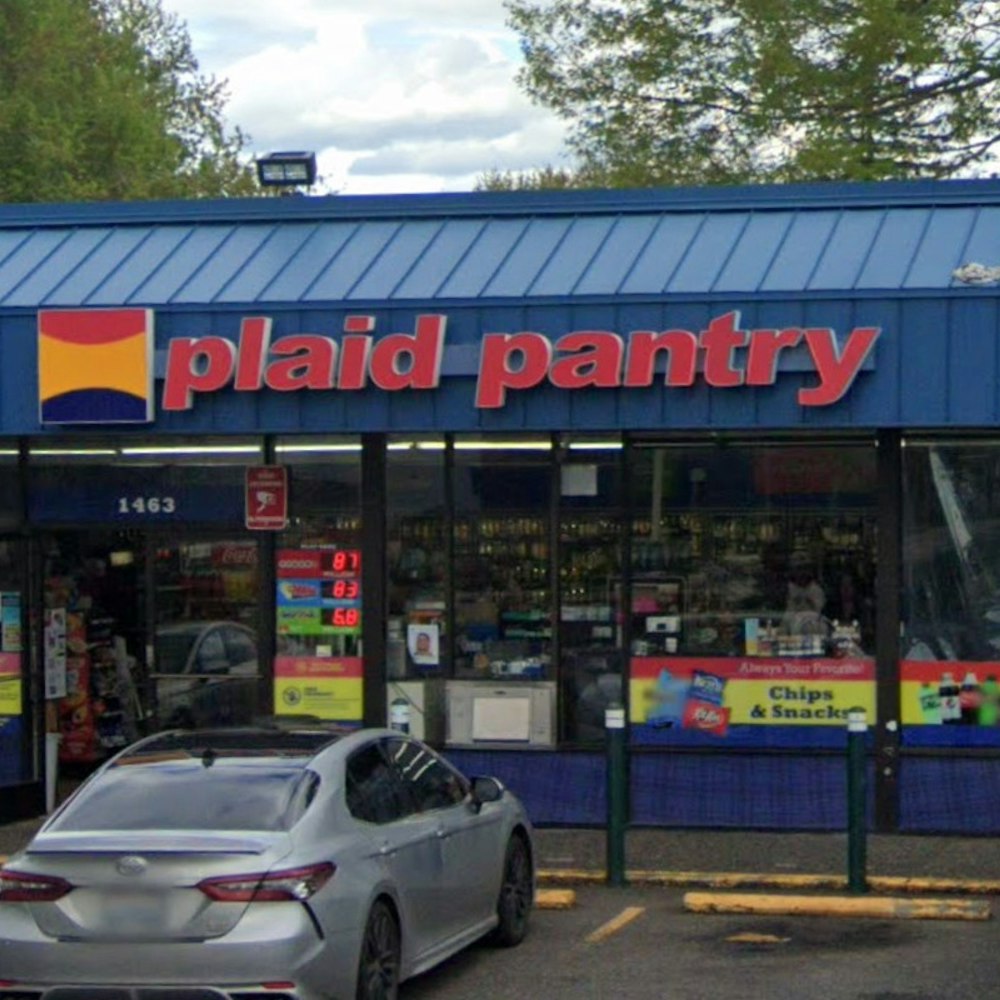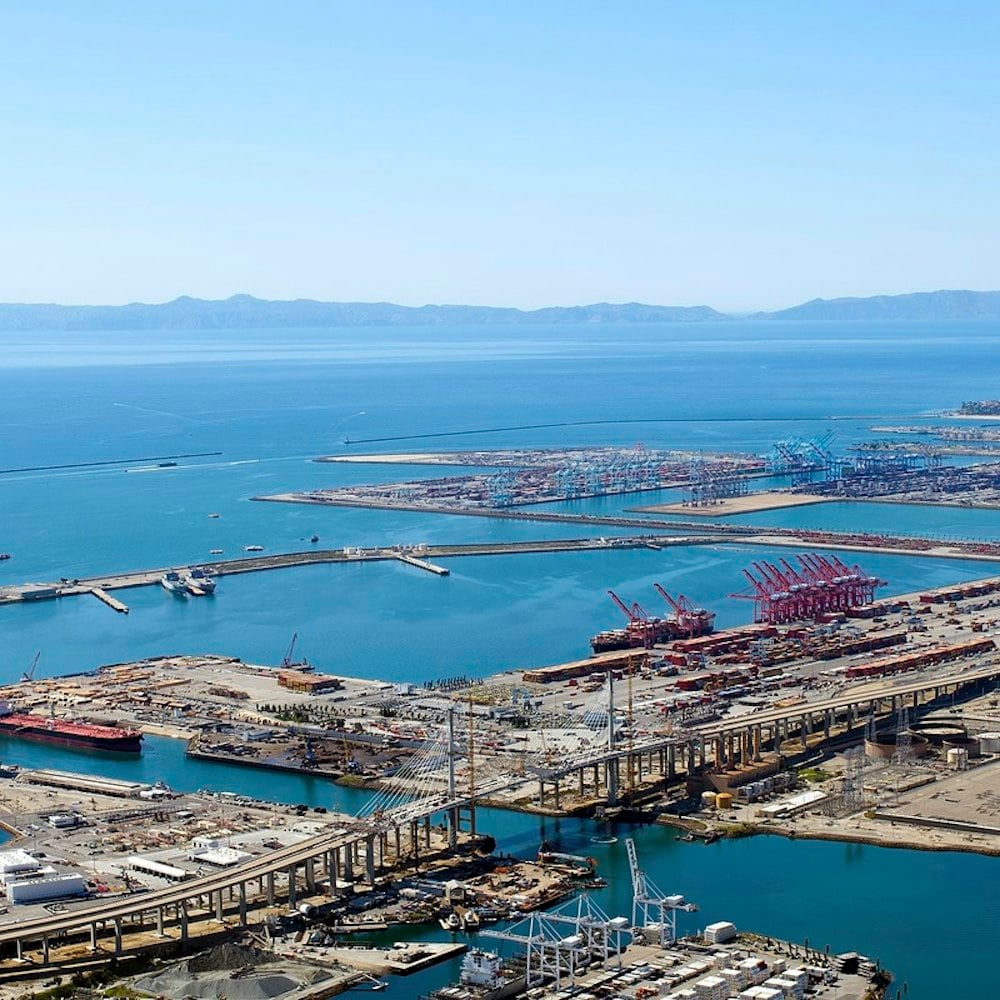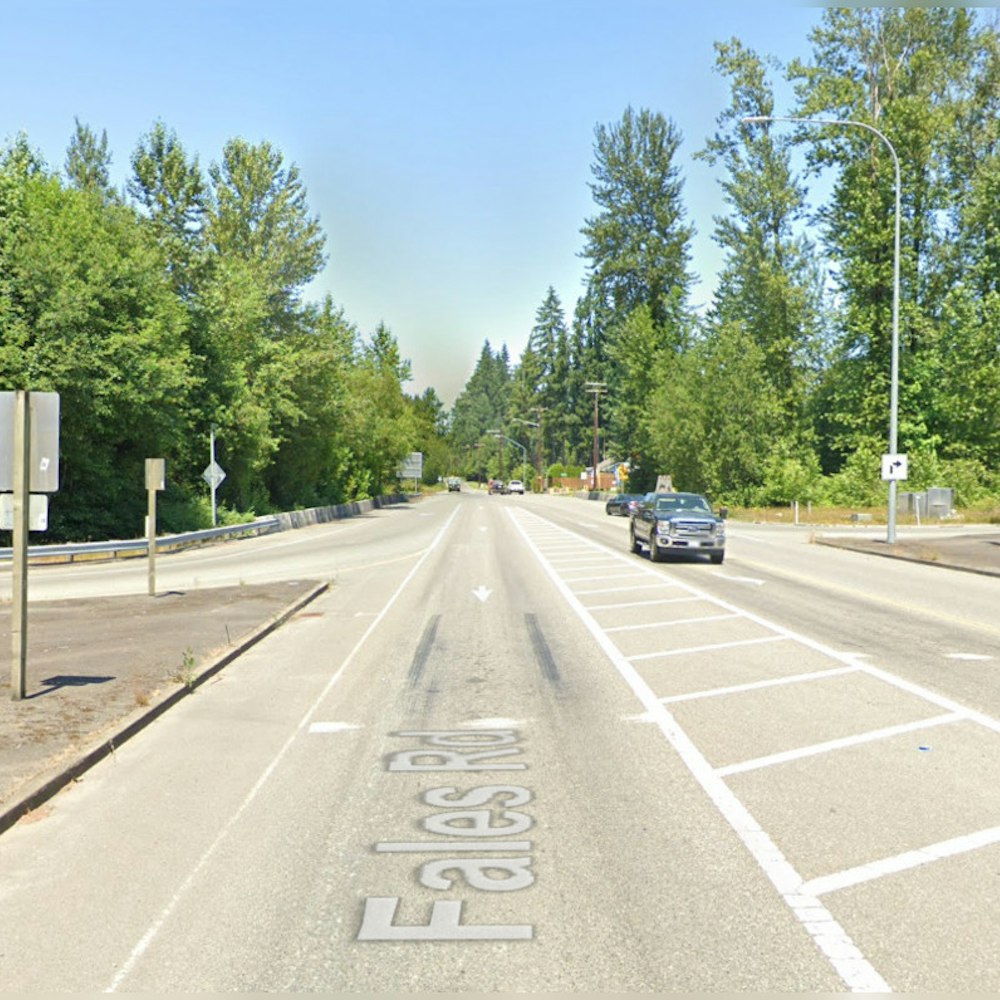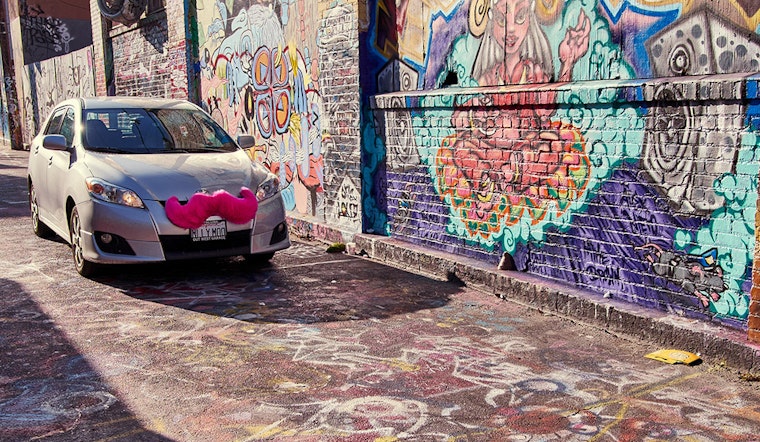
Valencia Street between 16th and 19th streets is now a no-go zone for Lyft pick-ups, in a voluntary move by the company intended to improve safety on the busy corridor.
If a passenger calls for a car on those blocks, they will be redirected to a pick-up spot on a side street, Debs Schrimmer, senior transportation policy manager for the ride-hailing service, said in a blog post last week.
When Hoodline tested the feature on Monday, it had already been implemented for pick-ups, but drop-offs on Valencia Street were still possible.
We also checked to see if the company's ride-hailing competitor Uber has a similar system in place, but found no such feature active. Uber did not respond to a request for comment by press time.
SFMTA spokesperson Paul Rose told us via email that the agency was not involved in Lyft's decision.
Valencia Street is part of the city’s high-injury network, the 13 percent of city streets that account for 75 percent of severe and fatal collisions.
On an average weekday, 2,100 cyclists commute along the corridor. Between January 2012 and December 2016, 204 people were injured in 268 reported collisions on Valencia, one of which was fatal.
Between 2012 and 2016, 40 percent of all collisions on Valencia were between vehicles and bicycles, compared to 37 percent of collisions between vehicles.
Dooring, in which a cyclist crashes when a driver opens a car door into the bike lane, is the most frequent collision type along the corridor.
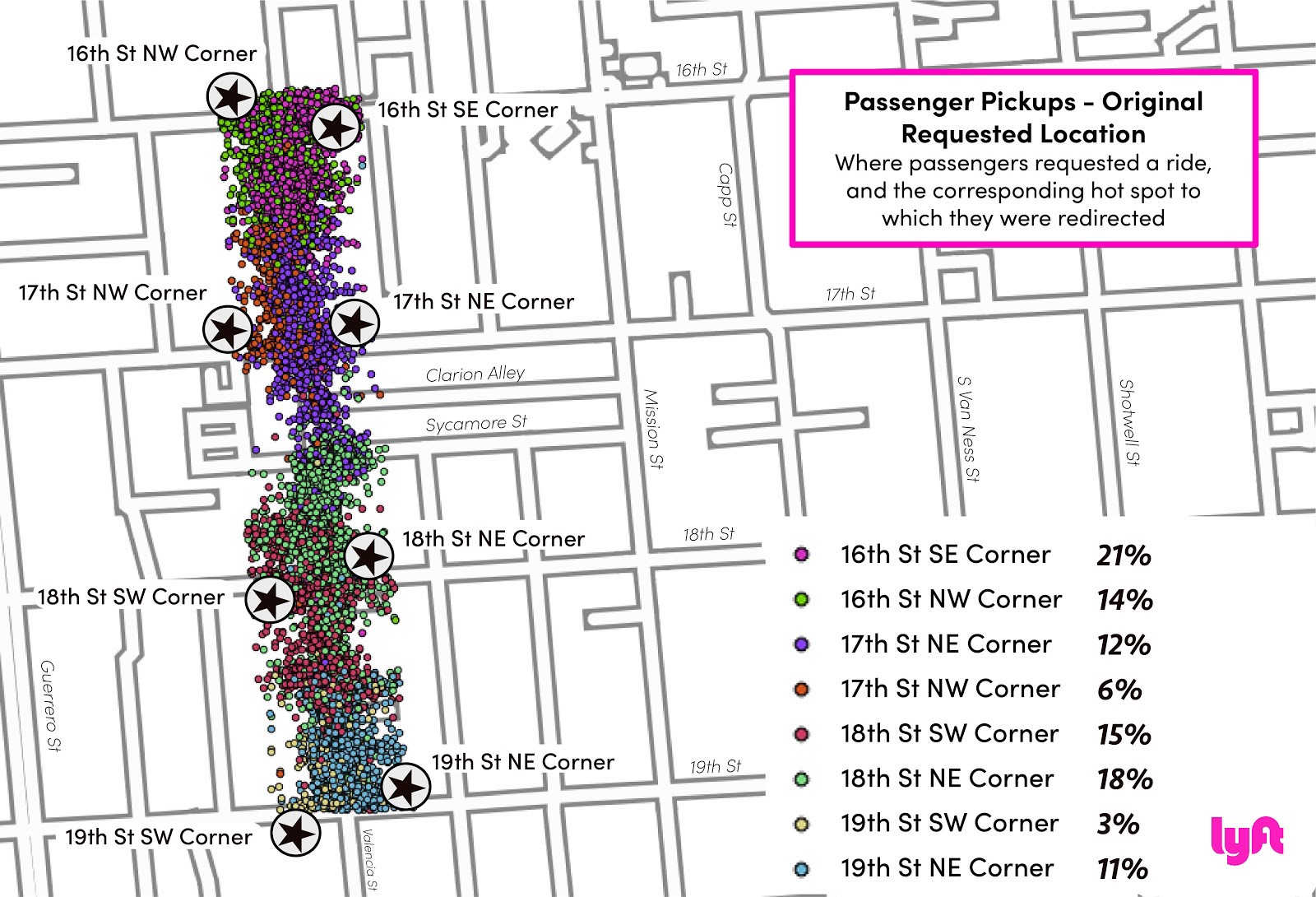
Earlier this year, Lyft tested out the new rules with a three-month pilot program called Venues, which recommended pre-set pick-up locations to passengers on Valencia Street between Market Street and Cesar Chavez.
"When a user tries to request a ride from an area that has been mapped with a Venue, they are unable to manually control the area in which they’d like to be picked up," Schrimmer wrote of the pilot. "Rather, the Venue feature automatically redirects them to a pre-established location."
The pilot ultimately concluded that the most heavily traveled corridors on Valencia were the blocks between 16th and 19th streets, which made up 27 percent of total Lyft rides along the Valencia corridor.
The company also determined that existing curb space on and around Valencia is insufficient, and that the city needs more loading zones.
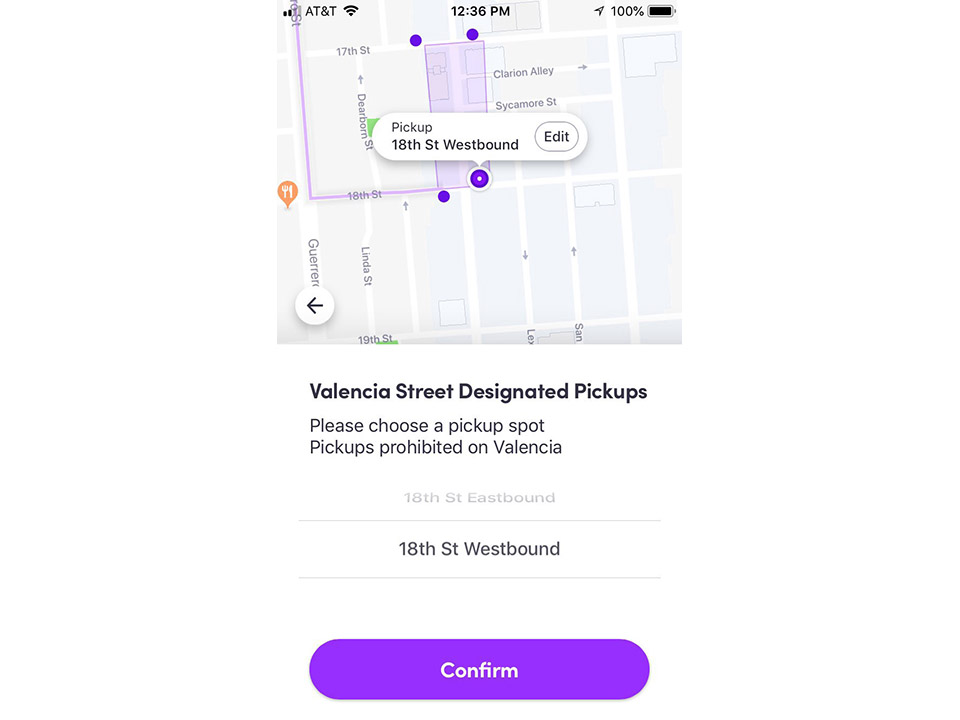
In her blog post, Schrimmer mentioned the need for continued coordination with city agencies, to make sure that dedicated pick-up spots protect cyclists and don’t interrupt the 55–16th Street or 22–Fillmore bus routes.
"We know that ridesharing is just one of the many competing uses of Valencia Street, and technology alone will not solve the challenges of pick-ups and drop-offs," Schrimmer noted, adding that adequate infrastructure like protected bike lanes and loading zones will be necessary to achieving the city's Vision Zero goals of zero traffic deaths in San Francisco by 2024.
The city is also working on plans to improve safety on Valencia. The SFMTA's Valencia Bikeway Improvement Project, which aims to reduce the number of conflicts between those who walk, bike and drive on the corridor, is expected to finalize and present its plans to the San Francisco County Transportation Authority Board this fall.
